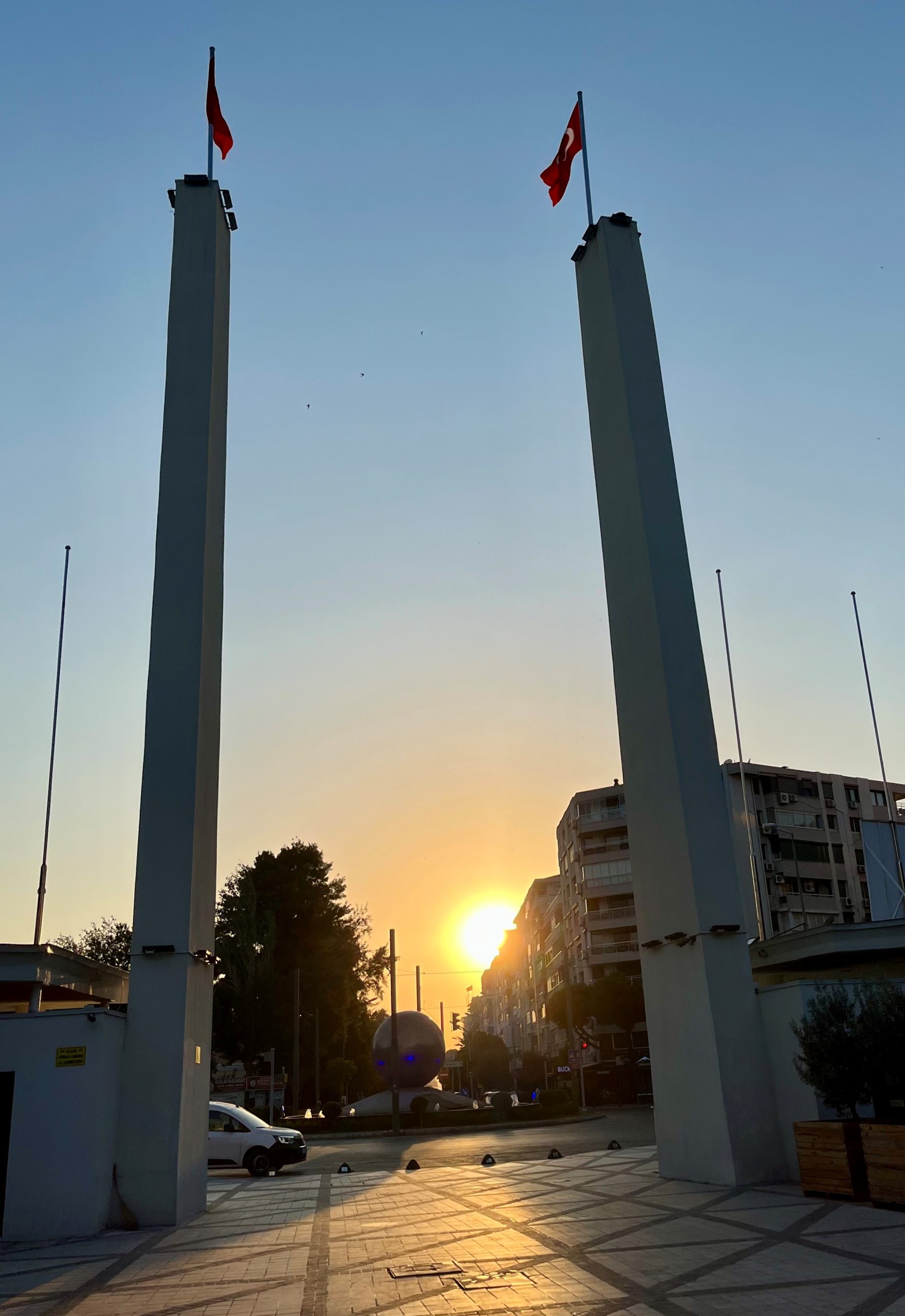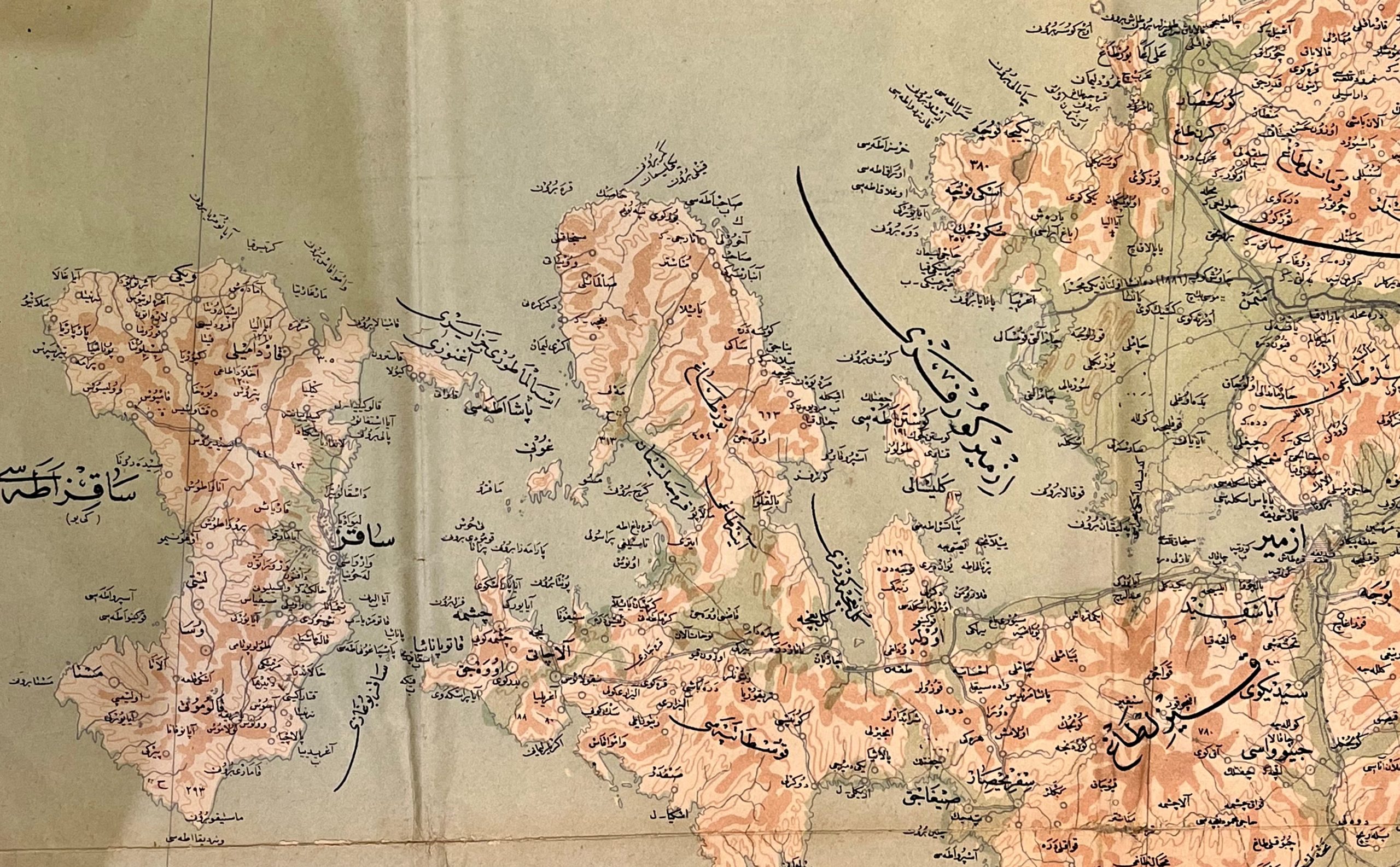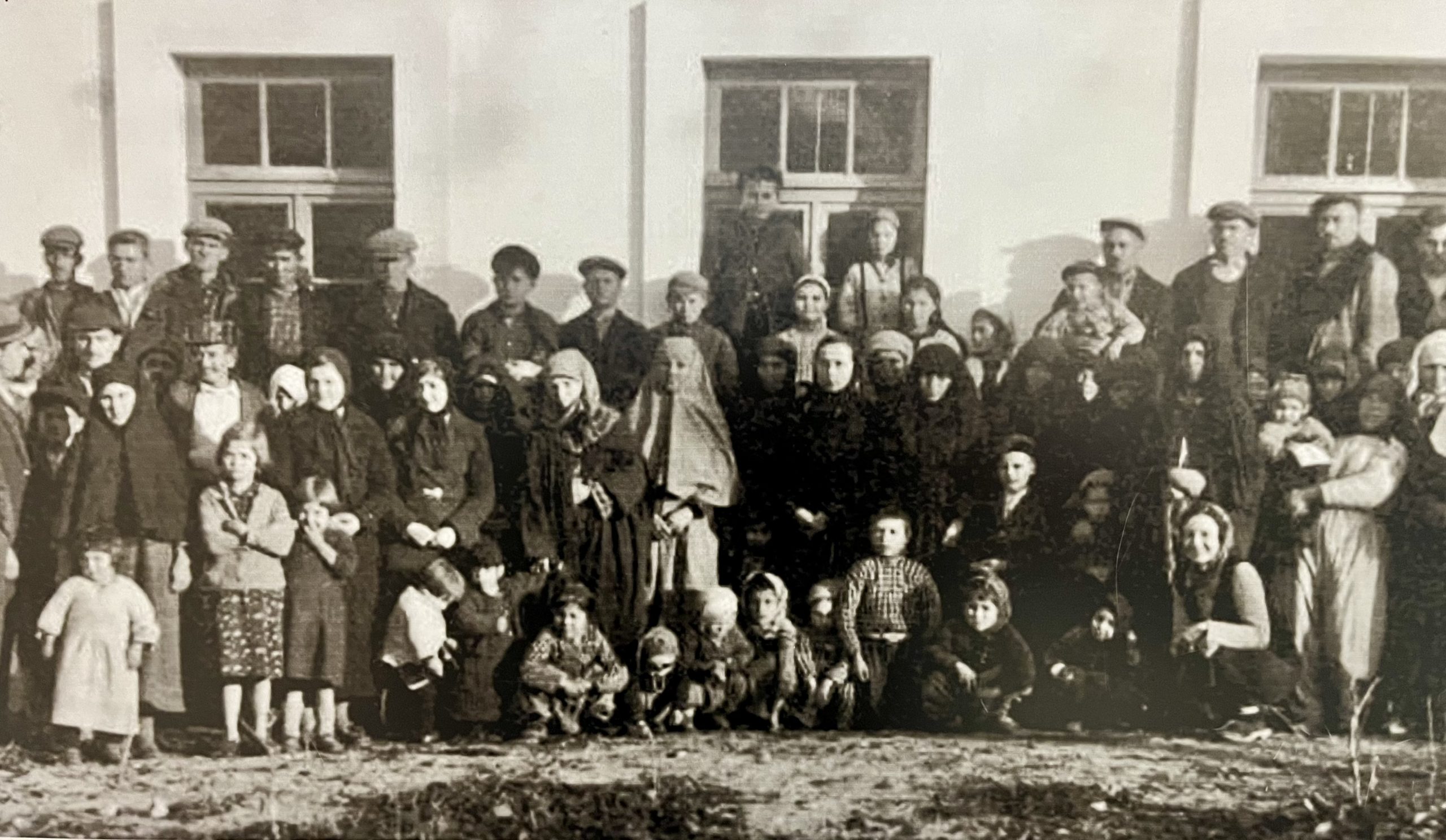This past summer I visited the Turkish city of Izmir on a book buying trip on behalf of Duke University Libraries (DUL). Located on the Aegean coast, Izmir is the third largest city of Turkey after Istanbul and Ankara with a population of over 4 million people. Part of the reason for visiting the city was to continue building upon DUL’s growing Turkish collections, in particular those documenting the so-called “Population Exchange” (Mübadele) between Greece and Turkey in 1923. Those collections will be exhibited in the Mary Duke Biddle Room, on Duke’s West Campus, in August 2025.

Izmir was one among many cities, towns, and villages along the Aegean Coast to be dramatically impacted by the Mübadele, the largest mass transfer of humans in history. As a direct result of the Treaty of Lausanne (1923) between the newly founded Republic of Turkey and the Kingdom of Greece, approximately 1.6 million people were forced to move from their homes and communities to new environments. The exchange entailed 400,000 Muslims in Greece moving to Turkey while 1.2 million Greek Christians moved from Turkey to Greece. The Mübadele represents the first mass expulsion of a people in the modern period and fully agreed upon by 2 sovereign nation-states. In today’s parlance, we may rightfully call ethnic cleansing. It became known as the ‘Lausanne Principle’, and influenced various other nation-states in their formation, e.g., India and Pakistan. During the Siege of Sarajevo (1992-1996) and the Serbian led war on Bosnia and Herzegovina, there was discussion of transferring various peoples to other parts of the Balkans due to the ethnical, religious, and linguistic diversity of Bosnia and Herzegovina.
Izmir (ازمير), formerly known as Smyrna (Σμύρνα), is a multi-lingual port city bustling with activity from trade, imports and exports of goods, travellers from near and far, and an example of the Ottoman Empire’s diversity of peoples, languages, religions, and cultures. The city had witnessed terrific damage during the Greek-Turkish war of 1919-1922, including an enormous fire that ravaged the Armenian and Greek quarters of the city. After 1923, the city’s character, like much of Turkey and Greece, changed significantly. New populations were told to live in this foreign-to-them city, some of whom did not speak the national language (Turkish) or were familiar with the customs of their forcibly-adopted country (Turkey). And the same fate befell those people who were forcibly removed from Turkey to live in Greece.

One particular place of importance for this book purchasing trip was the Göç ve Mübadele Anı Evi. Located in the Buca district of Izmir Province, this house museum it is a short bus ride away from the centre of the Izmir. Buca, known for its many butcher shops (kasaplar) was once home to a sizeable Greek population.

The house once belonged to a Greek family who were forced to relocate to Greece. A few years ago, the Izmir Municipality Government restored the house and transformed it into a small museum. The objects in the museum come from local families who were forced to leave their homes in Greece, in particular Crete, and relocate to Izmir Province. With trunks, documents, and photos, the Museum provides a realistic feeling to the difficulties, the pain, and suffering the Mübadele caused. Families had become strangers in what the Greek and Turkish governments had decided was their homeland.

In August 2025, the Biddle Room in Perkins Library will host an exhibition of DUL’s extensive holdings of both primary and secondary sources that document the Mübadele. These items will include images from the extensive postcard collections of Izmir Postcards and photographs collection; Selanik/Thessaloniki collection, and the Balkans collection. As well as select materials from the Ottoman Documents Collection.
In the mean time, anyone interested in learning more about the Mübadele can watch this magnificent al-Jazeera documentary, ‘The Great Population Exchange between Turkey and Greece.‘
Sean Swanick, Librarian for Middle East, North Africa, and Islamic Studies, Duke University.
Further reading
İzmir Sephardic Cuisine : With Its Lost and Existing 100 Recipes. 2012. Second edition. İzmir: Etki.
Eldem, Edhem, Daniel Goffman, and Bruce Alan Masters. 1999. The Ottoman City between East and West : Aleppo, Izmir, and Istanbul. New York: Cambridge University Press.
Tansuǧ, Feryal. 2018. İzmir/Smyrna 1862-1864 : Greek-Turkish Relations in a Late Ottoman City. Berlin: Peter Lang GmbH.
Yılmaz, Fikret, Sabri Yetkin, and Seyhun Binzet. 2003. İzmir Karpostalları 1900 = Izmir in Postcards 1900. İzmir: İzmir Büyükşehir Belediyesi Kültür Yayını.
Zandi-Sayek, Sibel. 2012. Ottoman Izmir : The Rise of a Cosmopolitan Port, 1840/1880. Minneapolis: University of Minnesota Press.



Deeply relevant blog about a topic I knew nothing about. The library home page is deeply deserving of this genre of blog.